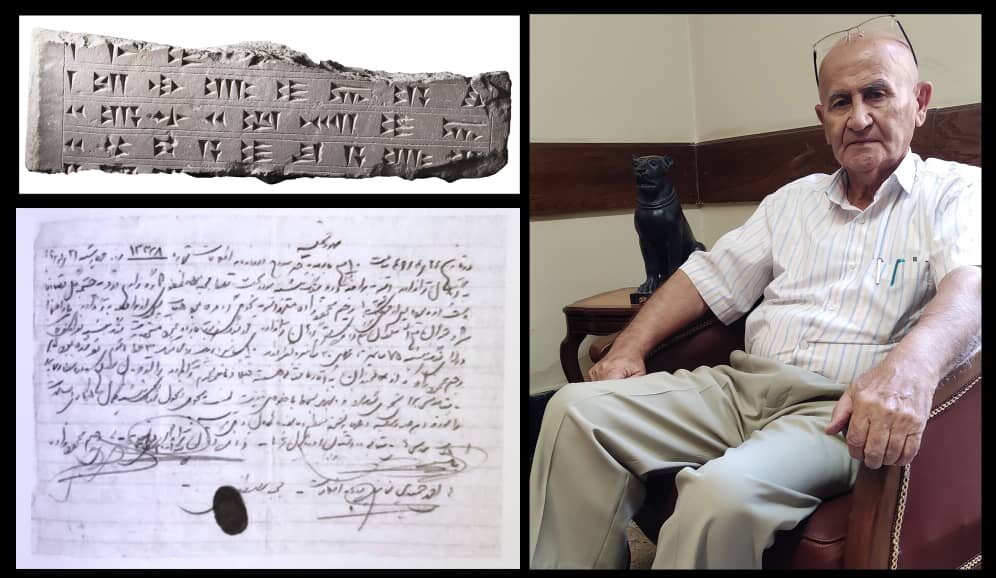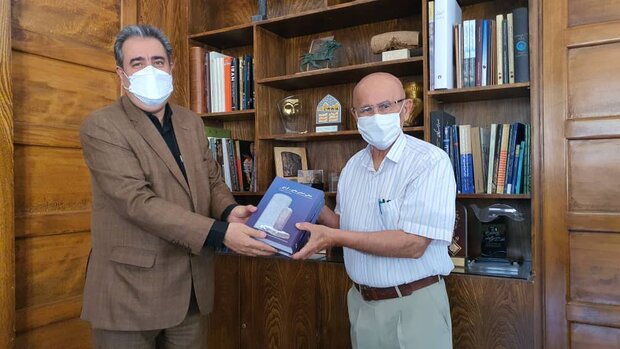Savior of Urartian inscription tours National Museum of Iran

TEHRAN – Cultural heritage lover, Rahim Oshnavi Mahmoudzadeh, has paid a visit to the National Museum of Iran to which he donated a fragment of Urartian inscription some half a century ago.
“The Qalatgah inscription is one of the few examples of Urartian inscriptions in the National Museum of Iran. This inscription, which is related to the 9th century BC, has been registered in the National Museum of Iran under the number 4637 and its translation is as follows: Minua, Son of Ishpuini, The powerful king, the great king, King of the country of Bia, Lord,…,” a curator of the museum told Tehran Times on Tuesday.
The inscription fragment with two other fragments was discovered in 1967 by Majid Mostafavi at Qalatgah Cheshmeh Gol village in Oshnawyeh.
Two other fragments of the inscription fell into the hands of smugglers, whose fate is unknown. Fortunately, a fragment of the inscription was preserved and finally handed over to the representatives of the Iran Bastan Museum (the National Museum of Iran) at that time.
The Urartu kingdom rose to power in the mid-9th century BC but it was eventually conquered by the Iranian Medes in the early 6th century BC.“The savior of this fragment was Rahim Oshnavi Mahmoudzadeh, who, considering his knowledge and interest in the cultural heritage of the region, bought this part of the inscription at his own expense and at the same time handed it over to two representatives of the Museum, Mr. Babak Rad and Ali Akbar Sarfaraz,” the curator said.
During the years of the 1980-88 Iran-Iraq War, Mahmoudzadeh carried out many efforts to save the famous inscription of Kileh Shin on the border of Iran and Iraq, in the present-day area of Oshnawyeh city which finally transferred to the Urmia Museum.
More than half a century after the discovery of the inscription, Mahmoudzadeh visited the National Museum of Iran on Sunday and had a meeting with the director of the museum, during which he presented two volumes of his recent book on linguistics and the history of the region to the National Museum of Iran.
Oshnavi Mahmoudzadeh was born in 1935 in Oshnawyeh and so far he has published five books on the history and cultural heritage of Kurdistan.
The Urartu kingdom rose to power in the mid-9th century BC, but it went into a gradual decline and was eventually conquered by the Iranian Medes in the early 6th century BC. The Urartians were succeeded in the area in the 6th century BC by the Armenians.

Urartu, an ancient country of southwest Asia centered in the mountainous region southeast of the Black Sea and southwest of the Caspian Sea. Today the region is divided among Armenia, eastern Turkey, and northwestern Iran. As mentioned in Assyrian sources from the early 13th century BC, Urartu enjoyed considerable political power in the Middle East in the 9th and 8th centuries BC.
According to Encyclopedia Iranica, the territory of the ancient kingdom of Urartu extended over the modern frontiers of Turkey, Iran, Iraq, and the Republic of Armenia. Its center was the Armenian highland between Lake Van, Lake Urmia, and Lake Sevan. Urartian archeological finds in modern Iran including castles, settlements, water channels and other water constructions, rock chambers, rock graves, stelae, rock inscriptions, and building inscriptions.
AFM

Leave a Comment